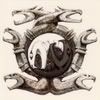Star Forces
Roil-class assault ship

Ship's Complement:
5 officers, 16 enlisted
Dimensions:
Length: 270m
Height: 154m
Width: 105m
Mass: 204,500 metric tons full load
Reactant mass: 26,600 metric tons maximum
Propulsion Systems:
Main Power System: AMM-6 anti-matter reactor.
Manuevering Thrusters (12): Plasma core anti-matter reaction thrusters with steerable nozzles (2 each top, bottom, left, and right plus 4 front).
Reaction Mass Thrusters (2): Plasma core anti-matter reaction thrusters with two-dimensional thrust vector nozzles.
Gravity Control System: Clasnac GCS-35B mod 1 capable of maintaining a constant internal gravity of 4.9 m/s^2.
Plane-space Generator: RG24 Space-time Bubble Generator. This system generates a space-time bubble with a 330 kilometer diameter
Endurance and Mobility Limits:
The dry stores endurance for a Roil is 1 month maximum; after that, it needs to restock. Water is recycled totally, and if necessary can be drawn from the reaction mass tankage and intra-armor stores. The Roil's all-energy armament allows it to engage in battle for as long as reactant mass lasts; typically one major battle. Including regular refits, the hull is designed to have an anticipated lifetime of 40 years.
Parasite spacecraft:
1 Calicke
Weapon Systems:
Anti-proton Cannon (1) : Assault ships are essentially wrapped around these large weapons, which require more instantaneous power than their small anti-matter plants can provide. Consequently they rely on large superconducting rings to store the energy necessary to fire the weapon. Similar problems hamper their ability to cool the weapon between firings. If necessary, the anti-proton cannon can be fired more frequently, but this results in markedly reduced energy output and extreme barrel wear.
The anti-proton cannon's low rate of fire and short effective range are largely offset by the near-point-blank engagement ranges typical of Plane-space combat, high destructive power, and variable dispersal. Against warships the blast is typically focused to the tightest dispersal possible to penetrate shielding and armor; a 40 degree cone with the bulk of the energy in a narrowly focused pulse. In the anti-missile role the full power of the pulse is allowed to disperse to the full cone.
Primary Purpose: Assault
Secondary Purpose: Anti-missile
Range: Short
Yield: Variable due to range and dispersal settings.
Rate of fire: Limited to once every 30 seconds
Payload: Unlimited.
Laser Turret (2) : Extremely accurate, long range, limited in rate of traversal by the mass of the turret, incapable of firing off-bore. Capable of high rates of fire for short durations with more sustained fire at around 1 shot/sec. Extended single bursts are possible, though used comparatively infrequently. The power feed is through redundant links to the ship's main power plant, supplemented by on-mount superconducting rings.
Power levels are generally too weak to penetrate full power shielding with a single hit, but with multiple hits localized shield penetrations are possible. Note that the amount of energy deposited on the target is typically low if it manages to penetrate shielding.
Primary Purpose: Anti-missile
Secondary Purpose: Defense
Range: Long
Yield: Dependant on laser dwell time.
Rate of fire: up to 3 shots/sec maximum, 1 shot/sec sustained.
Payload: Unlimited.
Electronic and special purpose systems:
MS-3 Shield System
Plane-space sensors
Plane-space communications
Radar
Lidar
Datalink
Design Notes:
Its design objectives were simple - the largest possible anti-proton cannon that can fit into the small hull, combined with adequate missile defense, high manueverability, high Planar Space velocity, and a reasonable range while being inexpensive to manufacture. The two laser turrets provide spherical anti-missile coverage for the Roil; these are often supplemented by the anti-proton cannon for missile defense.
The Roil uses a triple pressure hull design, with interior living spaces further protected by light beryllium armor. Critical facilities, such as the bridge and engine room, are protected by at least a meter of iridium mesh armor and have dedicated fully redundant life support systems.
The external armor is comprised of a 40cm carbon nanotube crystalline outer hull with a water-filled 1 meter gap backed by a 120cm spaced iridium/ceramic/composite mesh mid-hull. A layer of high temperature superconductor lines the mid-hull, allowing waste heat to be dumped into the armor (iridium is a highly effective heat sink) and mid-armor water during combat. If necessary, this water can be drawn on for reaction mass, but this is generally done only in an emergency due to its loss as a heat sink and the reduction in armor integrity if the outer hull is breached. If waste heat reaches critical levels, built-in explosive ejectors can jettison the armor before more serious damage occurs to the vessel.
Roth-class patrolship

Dimensions:
Length: 1282m
Width: 378m
Height: 382m
Weight: 12,320,000 tons
Reactant mass: 1,920,000 tons
Propulsion Systems:
Main Power System: 3 AMM-12A antimatter reactors generating up to 137.2 petawatts of power.
Manuevering Thrusters (24): High output plasma core antimatter thrusters with two-dimensional thrust vectoring, mounted in thruster arrays.
Reaction Mass Thrusters (8): Plasma core antimatter thrusters with fixed nozzles mounted in protected pairs.
Gravity Control System: Clasnac GCS-35C mod 4 capable of maintaining a constant internal gravity of 4.9 m/s^2.
Plane-space Generator: RG29 Space-time Bubble Generator. This system generates a space-time bubble with a 1310 kilometer diameter.
Endurance and Mobility Limits:
The dry stores endurance for the Roth is 15 months maximum; after that, it needs to restock. Extensive hydroponics provide enough fresh fruits and vegetables to sustain the crew indefinitely and provide a small supply for export to other ships. Water is recycled totally, and if necessary can be drawn from the reaction mass tankage and intra-armor stores. The torpedo magazines are generally empty after one skirmish. Railgun ammunition is typically sufficient for two major battles. The remaining armament is all-energy and has an effectively unlimited payload.
Including regular refits, the hull is designed to have an anticipated lifetime of 40 years.
Parasite spacecraft:
12 communications ships
6 shuttles
Weapon Systems:
MK89 Electromagnetic Gun (6) : This enormous 600 meter long weapon utilizes superconducting magnetic coils to accelerate a 25 ton terminally guided proximity fused variable yield fusion warhead to 0.1c. For surgical planetary bombardment, solid shells are typically used to prevent unnecessary radioactive contamination. If required, special shells loaded with antimatter allow for missions ranging from penetration of deeply protected bunkers to planetary area denial. Even a cruiser's power plant is incapable of providing this sort of surge power, and so enough power is stored in superconducting rings to fire the weapon twice before recharging.
Primary Purpose: Assault
Secondary Purpose: Planetary bombardment
Range: 10,000 kilometers
Yield: Variable settings from 5 megaton fusion warhead to 120 megatons. Kinetic impact energy is equivelent to a 27 megaton explosion if a direct hit is achieved; actual energy transferred is typically much lower due to blow-through.
Rate of fire: Typically 6 rounds per minute sustained, up to 10 rounds per minute.
4 bow, 2 stern.
Plane-space Torpedo (10) :
Spinal anti-proton cannon (1) : 1 mounted on the bow.
Steerable anti-proton cannon (4) : These weapons are smaller versions of the anti-proton cannons mounted by assault ships. Their size allows them to fit within a ball turret that can bear on targets up to 30 degrees away from the centered position. The addition of high capacity heat sinks, larger superconducting rings and the much higher generator output available on larger ships permits dramatically higher rates of fire, substantially increasing their utility as anti-missile weapons.
Like their larger cousins, these weapons achieve mission kills against missiles by irradiation rather directly destroying them. The anti-proton stream blinds missile and torpedo sensors with thruster control and antimatter containment systems often suffering catastrophic failure.
Due to the wide dispersal and lower power levels available, these weapons are generally considered a weapon of last resort against shielded ships; individual shots lack the energy to locally overload shields and penetrate them.
Primary Purpose: Anti-missile
Secondary Purpose: Defense
Range: Short
Yield: Dependant on range due to dispersion; typically fired at intermediate dispersion.
Rate of fire: 2 shots/second
Payload: Limited by the ship's power supply; effectively unlimited.
4 mounted on the bow.
Quad Steerable Anti-proton Cannon (4):
Retractable Laser Turret (32) :
Extremely accurate, long range, limited in rate of traversal by the mass of the turret, incapable of firing off-bore. Capable of high rates of fire for short durations with more sustained fire at around 1 shot/sec. Extended single bursts are possible, though used comparatively infrequently. The power feed is through redundant links to the ship's main power plant, supplemented by on-mount superconducting rings.
Power levels are generally too weak to penetrate full power shielding with a single hit, but with multiple hits localized shield penetrations are possible. Note that the amount of energy deposited on the target is typically low if it manages to penetrate shielding.
Primary Purpose: Anti-missile
Secondary Purpose: Defense
Range: Long
Yield: Dependant on laser dwell time.
Rate of fire: up to 3 shots/sec maximum, 1 shot/sec sustained.
Electronic and special purpose systems:
AS/25Y multimode phased array radar
AS/57A radar
AS/57C radar
AS/SLQ-154 phased array antenna
AS/LAQ-15D lidar
AS/SRQ-28 omnidirectional infrared imager
AS/SLQ-11 optical sensor
AS/SLQ-10 jamming suite
AS/SSG-7 datalink
DFS-13 Combat Shield System: Shield generators project an ellipsoid enclosing the entire ship, protecting it against energy, particle and projectile-based attacks. It also acts as a particle and radiation screen, deflecting or vaporizing objects and charged particle streams that might present navigation hazards such as the space debris commonly found in the orbit of inhabited planets, or a solar flare while in the inner system.
Extremely low energies are deflected; the higher energy attacks typical of modern combat vessels are absorbed by the shield and stored in large dedicated superconducting rings. Excess energy is then bled off to feed various ship's systems. If the energy absorbed increases beyond the ability of the superconductors to store it, the entire ring destabilizes and the shield collapses. While this typically results in no direct damage to the shield installation, it takes several hours to bring the shield back online.
The shield can absorb considerable amounts of energy, but highly focused or repeated attacks on one segment of the shield can cause a local overload and subsequent penetration. Any penetrations will be severely attenuated, resulting in minimal damage to the vessel.
Extremely high energy attacks and projectiles with penaids such as an antimatter torpedo or the warheads of a cruiser's main battery will easily penetrate the shield, resulting in the crippling or destruction of the vessel.
Additional Design Notes:
Roth class cruiser armament summary: 4 dorsal torpedo hatches protected by another retractable armor plate to the rear plus 6 ventral torpedo hatches to the rear. 4 spinal electromagnetic guns forward, 2 rear. 4 batteries of 8 retractable single mount defensive lasers (right dorsal, right ventral, left dorsal, left ventral along the main body, total of 32). 4 quad defensive laser turrets, one per engine mount (2 left, 2 right). Those quad mounts are *huge* - simple rough approximation shows at least 4.5 times the length of a Calike! 8 fixed reaction thrusters, mounted as 4 protected pairs. At least 4 high output manuevering thrusters (suspected at least 8), plus an unknown number of smaller thrusters for more precise movement
Frontlineship

Dimensions:
Pylons closed:
Length: 240m
Height: 50m
Width: 50m
Pylons opened:
Length: 150m
Height: 220m
Width: 240m
Purpose
The Humankind Abh use this ship purely as artillary either when engaging in battle in planespace or regular space with its capability of launching 56 mobile space-time mines.
Victory Class Destroyer

class: Victory
type: Heavy Destroyer
length: 2,990.31 meters
mass: 310 million metric tons
crew: 150 - 600 persons
troop: 2,000 [?]
fighter: 56 Star Cutter fighter craft
power: Quantum Gravimetric reactor
Fusion reactors
duration: 20 years [?]
weapon: 1 Super Quantum Discharge Cannon
8 Heavy Quantum Discharge Cannons
6 Heavy Neutron Cannon
12 Fusion Beam Cannons
Multiple Anti-Fighter pulse cannons along hull
Missiles [multiple launchers]
defense: 10-15 meters re-enforced hull with Plasteel / Crystalline Armor mesh
Tractor Beams
Gravitic Defense Fields
Stealth Device
Whitestar

class: Whitestar
type: Monitor
length: 475.6 meters
mass: 6.8 million metric tons
crew: 38
troop: 60
fighter: 4 Nial Heavy Fighters
power: Quantum Gravitic Reactor
3 Fusion Reactors
duration: 5 Years [?]
weapon: 1 Quantum-Gravitic Discharge Beam Cannon
2 Pulsed Neutron Cannon
4 Pulsed Fusion Cannons
defense: 1.8 meter re-enforced Vorlon Bio-Armored hull
Gravitic Tractor Beams
Abh Shields
Stealth Device
Shadow Destroyer

class: Shadow
type: Advanced Destroyer
length: 1,720 meters
mass: 50 million metric tons
crew: 350
troop: 18,000
fighter: 36
power: Hyperspace Tap Reactor
duration: N/A
weapon: 4 Hyperspace Tap cannons
6 Heavy Pulse cannons
6 Fusion Beam cannons
6 Particle Beam Guns
12 Light Fusion Beams
12 Plasma cannons
Fusion missiles [2 launchers]
defense: 8 to 10 meter armored hull - Shadow Bio-Armor
18 Mk. III Defense Grid Energy Projectors
Shadow Cruiser

Class: Shadow
Type: Heavy Cruiser
Length:876m
Crew:200
Troop:2,000
Fighter:3 Thuderbolt Starfurries
Power: Hyperspace Tap
Duration: N/A
Weapon:2 Hyperspace Tap cannons
4 Heavy Particle Beam Cannons
3 Heavy Railgun Turrets
9 Heavy Pulse Cannon Turrets
9 Light Pulse Cannon Turrets
Defense: 6 to 8 meter armored hull - Shadow Bio-Armor
Small calibre energy and projective AA placements
10 Mk. I Defense Grid Energy Projectors
Urbanuss Flankers

Class: Urbanuss Flanker
Length: 400m
Width: 560m
Height: 276m
Weapons: 2 Energy discs (port and starboard side)
1 EA cannon
2 Hellfire torpedoe tubes (both on the bow)
6 Graviton cannon turrets (2 ball turrets located on the top)
Defense: Abh Shields
EA Field
Refined Crystalline Armor III
Propulsion: 3 Gravimetric Engines
Power: EA Absorber
Quantum Singularity Reactors
Hyperspace Tap
Planespace Generator
Gunstar

Class: Gunstar
Length: 45m
Width: 20m
Weapons: 6 laser cannons (4 forward and 2 back)
Death plasma (last resort-see pic)
Defense: EA field
Amethyst armor half a meter thick
Propulsion: 4 class C Gravimetric engines (scaled down version of those used on the larger ships)
Planespace Generator (the smallest in the universe)

(Death Plasma)
Basically all gunports open to reveal a large array of missles and lasers. The ships then spins on its axis to fire in all directions when it is surrounded.
Thunderbolt Starfury

Class: SA-32A Thunderbolt
Length: 15.54
Mass: 52 metric tons
Weapons: 4 Linked, Unidirectional 40mm Pulse Cannons
Fusion missles
Defense: 6 centimeters Amethyst armor
Deflector shields
2 grappling claws
1 cutting laser
Paryunu Destroyer

Length: 4.6km
Width: 800m
Height: 560m
Weapons:
1 EA cannon
15 Anti-Proton cannon turrets
100 Graviton Cannons
150 rapid fire torpedoe tubes (includes Hellfire and Transphasic torpedoes)
4 forward Electromagnetic Rifles
6 rear Electromagnetic Rifles
100 mobile space-time mines (evenly distributed on top and bottom)
50 Capital class Particle Beam turrets
75 Pulse Fusion cannons
15 Hyperspace-tap ray turrets
25 Capital class Ion cannons
Defense:
EA field
Gravity wells
Gravitic Defense Field
60 mk III Defense Grid
Lightning Rail Guns
30m re-enforced Polyamethiest/ Crystalline armor hybrid
Power Source:
EA Reactor
Hyperspace Tap
Planespace Generator
Propulsion:
6 Gravimetric Engines
Fighter:
100 Star Cutter
Troop:
About 2,000
Abriel Missle Cruiser

Length: 800m
Class: Missle Cruiser
Crew: N/A
Fighter: N/A
Power: Claudia Drive
Weapon: 1,000 torpedoe tubes
4 Gravitic Neutron Cannons
1 antimatter Cannon
4 Electro-Pulse Guns
Sif Agh

Length: 800m
Class: Battlecruiser
Crew: 150
Fighter: 25 Thunderbolt Starfurries
Power: Yuanon Drive
Hyperspace Tap
Space-time Capable
Weapon: 1 mass drive
10 Ion cannons
15 Pulse Fusion cannons
15 Heavy Particle beams
20 Graviton cannons
20 Pulse beam cannons
30 Mobile mine pads
50 Missle silos
6 EM rifles
4 Anti-proton cannons
4 Temperal torpedoe silos
8 Hyperspace Tap cannons
Fapyut Fek

Length: 1.3km
Class: Battleship
Crew: 300
Fighter: 30 Thunderbolt Starfurries
Power: Yuanon Drive
Hyperspace Tap
Space-time Capable
Weapon: 2 mass drive
15 Ion cannons
12 Hyperspace Tap cannons
30 Pulse Fusion cannons
20 Heavy Particle beams
30 Graviton cannons
20 Pulse Beam cannons
15 Heavy Pulse Beam cannons
40 Mobile mine pads
150 Missle silos
8 EM rifles
6 Anti-proton cannons
5 Temperal torpedoe silos
Aibs Sash Leitofec

Length: 650m
Class: Dreadnought
Crew: 75
Fighter: 5 Thunderbolt Starfurries
Power: Yuanon Drive
Hyperspace Tap
Space-time Capable
Weapon: 10 Ion cannons
20 Pulse Beam cannons
5 Hyperspace Tap cannons
10 Pulse Fusion cannons
10 Particle Beam cannons
4 EM rifles
15 Mobile mine pads
25 Missle silos
10 Graviton cannons
Land Vehicles
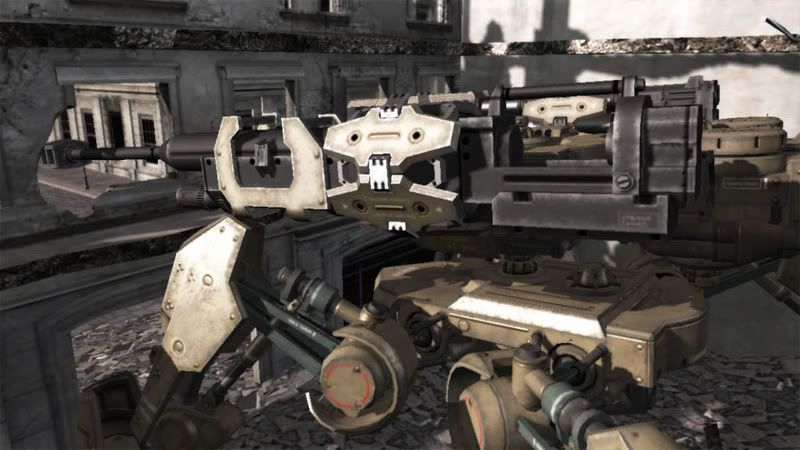
Unit Type: Sniper
Length: 7 meters
Height: 4 meters
Width: 3 meters
Weapon: 1 Heavy particle beam
2 Cartidge round rifles
4 smoke grenade launchers
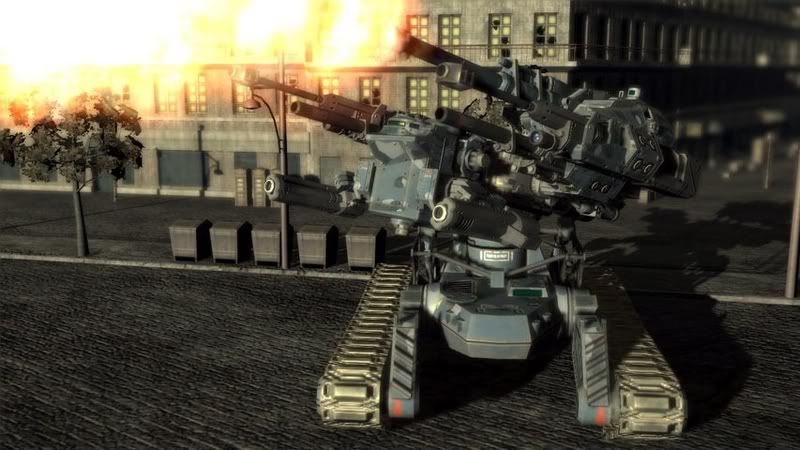
Unit Type: Assault
Length: 4 meters
Height: 15 meters
Width: 5 meters
Weapon: 4 Heavy plasma rifles
4 Grenade launchers
2 Medium class rocket launchers
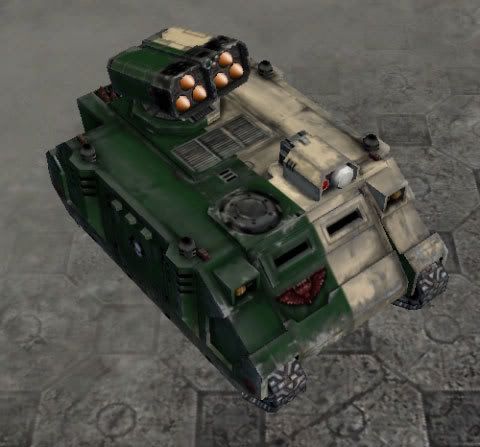
Unit Type: Vehicle, Light Tank
Role: Long Range Artillery, Anti-Infantry and High Morale Damage
Weapons: Missle Battery
Abitlities: Blind Firing
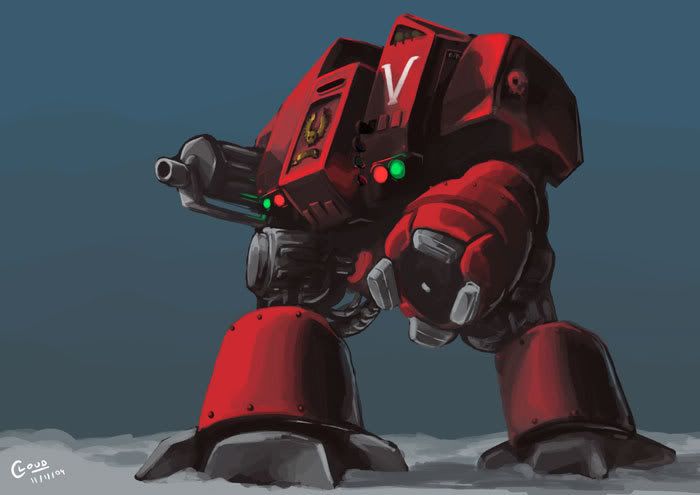
Unit Type: Vehicle, Walker
Role: Infantry Support, Short-ranged Siege
Weapons: Assault Cannon (Upgrade), Missle Launcher (Hellfire variant only), Twin-linked Lascannon (Upgrade), Dual Close-Combat Weapons
Ground Troops

D'Haran Marines:
In a league of their own from the planet D'Hara, these elite soldiers are made up of humans from a world with a history filled with war. Battle is in their blood and practically a way of life for some. These soldiers tend to stand close to 7 ft. tall without any genetic interference. Full of muscle and fiercely protective of their Lord Rahl, they are a force to reckon with on any battlefield and even more terrible when that battleground is their home. Each soldier is versatile in the use of weapons that consist of blades to the more advanced weaponry expected from a space empire. These soldiers can be dropped into the thick of battle in small groups and are capable of holding a position until reinforcements arrive. One of the finest soldiers the Abh Empire has to offer, they are both couragous and honorable holding to the sanctity of life even as they fight.
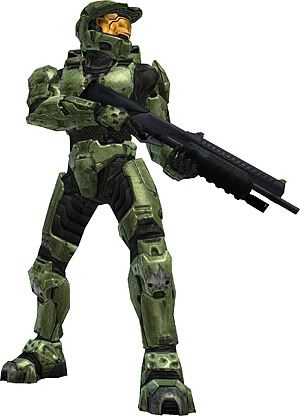
Abh Clone Troops:
Products of genetic engineering, these clone troops are Abh in almost every sense of the word. They are still born with a frosh and have similar longevity in life. The difference here is that modifications were made to remove emotions in order to make them more compliable with orders. Now these clone troops can be sent on missions without protest and without thinking of the consequences. They live for the sole purpose of completing their mission and moving on to the next. While not on the same grades as the D'Harans or Imperial Marines, their numbers and resources still make them a valuable resource on the battlefield.
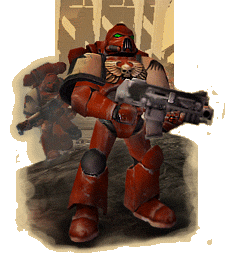
Imperial Marines:
The latest and perhaps least talked about military unit are the Imperial Marines that were comissioned under Imperial Admiral Abriel Gaf'ton's orders. They are the least talked about as they are the most feared. Only answerable to the Emperor, these marines carry out their quest of bringing Order to the universe and route out Chaos wherever it is found. These marines have been provided a complete new arsenal of weaponry and armor that is beyond anything that either ground force has to offer. Under Gaf'ton's orders, the Imperial Marines have been alotted new technology to make them a humbling force. Given the distinct lack of concern that traditional Abh have for ground worlds, it is no wonder that the weapons for the Imperial Marines have the ability to completly cleanse a world of life.
Other Technology
Graviton Cannon:
One of the Star Forces R&D's greatest accomplishments in the way of kinetic rounds. This weapon was created primarily for putting holes in the shield of enemy vessels and doing maximum damage when coming into contact with armor. When the electrified enhanced bullet spins at a high velocity, it produces gravitons which in turns fragments the target internally with localized tidal power.
Mobile Mines:

One type only, Plane Space-capable antimatter torpedo. Characteristic multiple thruster ports. Capable of lurking, but this is generally used to hold the missiles in place until they're ready to be fired at the enemy rather than bringing them into range of the enemy before lurking.
Carrier vehicle provides targetting information to the kill vehicles, which independantly attack the designated target. Carrier vehicle provides Plane Space propulsion and initial boost. Individual kill vehicle (and carrier vehicle) propulsion via single vectored thruster. Individual kill vehicles have lower lethality due to smaller warhead, reduced effectiveness against ECM due to smaller and less capable seeker, and lower total delta-v. Largely offset vs. assault ships since a single missile has high probability of a kill, particularly when attacking Sords. Attack mode is acquisition and boost, acquisition by kill vehicles, explosive bolts separate the kill vehicles from the carrier, and finally the kill vehicles independantly engage. Can be switched to "mine" mode, where the kill vehicles are separated and then independantly attack targets of opportunity.
All current missiles have datalink (while in normal space), can be command targetted, and can also self-select targets based on weighting and randomizing target data - allowing rapid fire of large salvos while effectively blind due to exhaust from previous weapons. Among other things (like inadequate targetting). The current version of Abh missles were modeled after those used by the United Mankind during the second war for mankind. Each projectile is equipped with multiple warheads which can separate into different projectiles once energy readings are detected from incoming defensive fire of an enemy vessel. Thus creating more targets to shoot at and increasing missle barrage effectiveness.
The EA Field:
A field merged with the tech of Abh planespace bubble generators and traditional Star Forces shield technology, the EA field is the ultimate form of energy absorbtion from Star Forces R&D. The EA field is capable of taking on enormous amounts of energy and converting them to practical uses whether it be for powering weapons or defense system or lighting a bulb in the maintenance room. Star Force shields were created for these reasons but now with the EA field, energy storage is no longer restricted to conducting rings but put into a reactor for storage and use. The amount of energy capable of being stored is only limited to the size of the reactor. From the designs of planespace bubbles, Star Forces R&D has maded this field capable of expanding. Just like in planespace, ships equipped with an EA field can merge with others to increase the storing capacity as energy is syphoned off equally into different reactors aboard multiple ships. Thus allowing a fleet to withstand devastating attacks from superlasers. With this field also comes the ability to provide an umbrella of sorts for other ships as solid kinetic matter can pass through the field allowing them ot seek protection during a barrage. For an enemy that relys solely on energy based weapons, the field now brings the adversary within close distance making allied attacks ever more devastating. A typical EA bubble expands at a radius of about 100 meters depending on the size of the ship. The more ships merged, the larger the bubble. This can give naval fighting an almost victorian feel as ships duke it out like caravals on the open seas. The EA field is also immune to ion fire and other such devices. Ion fire and EMPs in general require exposed wires, sensors, and other open ports to destroy circuitry. An EA field has no such origin point or exposed circuity for an attack to worm into. Instead it is almost self-applying where energy absorbed is broken down by the field itself into usable energy for the reactor. Energy travels then through a series of "cleaning" ports before dispersed into the reactor for use. The EA field is not the end all be all for defense though. It does have its weakness. Projectiles can still pass through the field though any energy given off by them is absorbed. Also, the potential for a reactor to overload is ever present. If the reactor should overload, it could potentially blow and take the ship along with it.
Hyper-X Capacitors:~Purchased from the Huntarian Alliance~
Special energy capacitors were designed that could store an impressive amount of energy in a very small space. These capacitors would make incredible batteries, especially for their small size and large energy capacity, and that is an area that the Alliance Military Defense Development is exploring, but it is outside of the scope of this system. The primary purpose of the capacitors is to provide additional energy for a weapon so that it can fire twice as quickly for a single fire. For example, a laser cannon that could normally fire three times per second is equipped with this system and can now fire six times for a single second. After the capacitors are discharged once, they need to be recharged. To recharge them, the weapon that they are attached to must not fire for 5 seconds. Unfortunately, each weapon must be equipped with its own capacitor, and the larger the weapon, the larger and more expensive the capacitor. Also, for obvious reasons, only energy weapons can be equipped with these capacitors.
